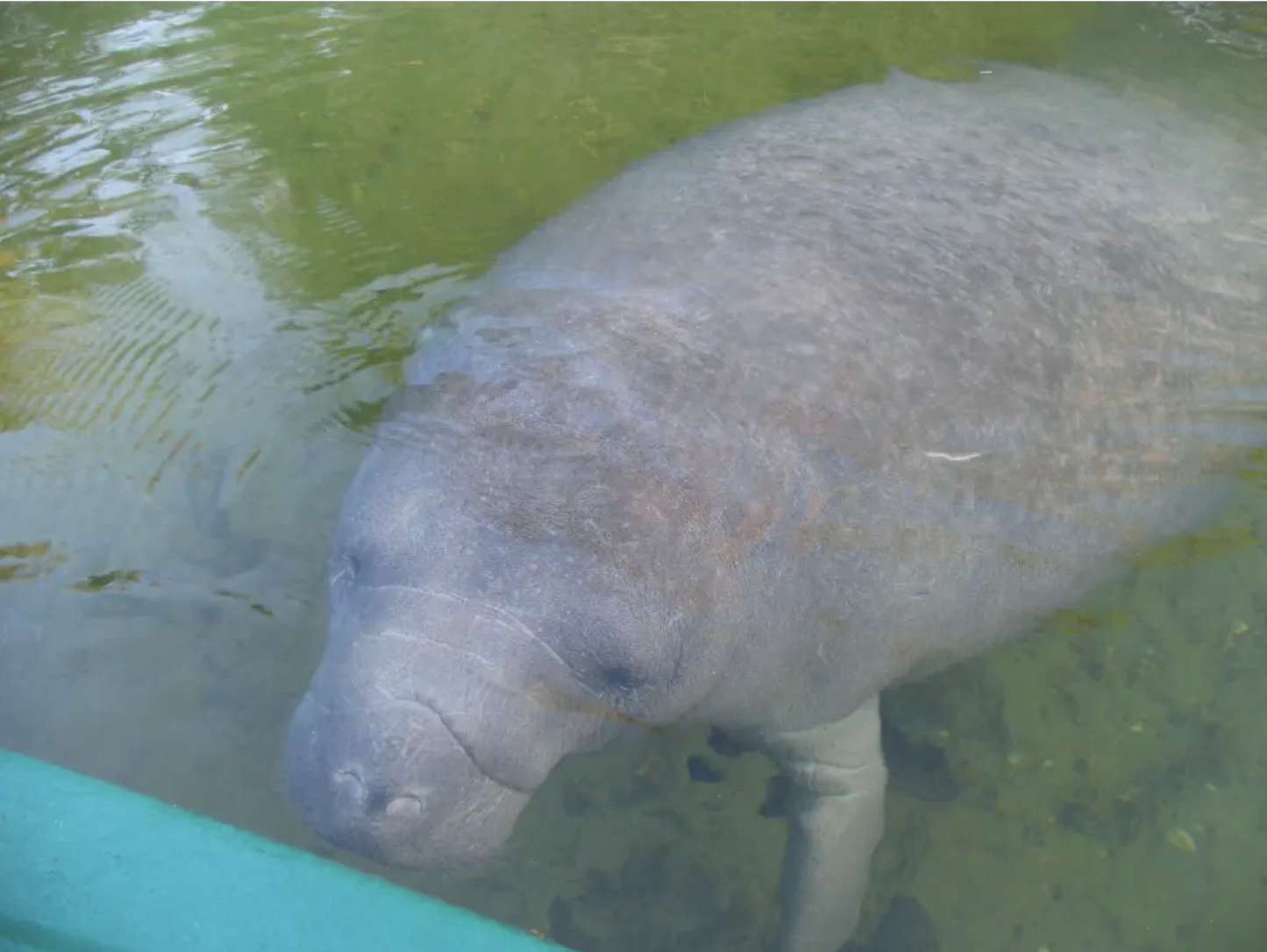FOR THE LOVE OF MANATEES
I had one goal in traveling to Florida. To kayak with the manatees.
I pictured a lazy, blue river so clear you could see the bottom. Schools of mellow manatees, those so-called sea cows, cruising the Crystal River and enjoying the warmth of the springs that feed the waterway, like smiling submarines on vacation.
We would paddle to a nice spot tucked away from the breeze and wait for the manatees. There would be me in my trusty kayak, the breeze in my hair, floating on a sea of glass, snapping pictures as these wondrous beasts surface with spews of spray from their nostrils to bid me fair greeting. Number 17 on the bucket list realized.
The reality, however, was a little different.
Instead, I found myself chasing after my guide, a rogue biologist on a mission to find us a manatee, through open, choppy waters for three hours straight. Against a stiff breeze, splashing water with my oars like a drowning swimmer, I followed him into the less explored reaches of Crystal River in search of manatees in their private hangouts and feeding grounds.
They weren’t in the little cove next to the fabled Port Paradise Hotel. They weren’t in the marshy refuge we found after skimming through a narrow passageway of reeds with a few inches of water between our kayaks and the mud. But we weren’t going to stop until we found them. I just hoped our guide had a rope in his boat so he could tow me in when my arms fell off.
I chose to visit Crystal River, a spring-fed estuary on Florida’s Gulf Coast about two hours north of Tampa, at the end of February because the manatees vacation there during the wintertime. The Gulf of Mexico is relatively cold, and Crystal River, which feeds the Gulf, is fed by hot springs that keep the water about 72 degrees.
The manatees swim upstream to warm up, just like we head to Florida to soak up some rays in the late spring. However this year, Florida was experiencing a warm snap. Eighty degrees for a week, in the Gulf and Crystal River. The manatees didn’t need a spa vacation. Even though the hotel concierge told me there were hundreds in the river two weeks before, my guide was hard pressed to find them today.
He also explained manatees don’t really like rough water—and neither do I. Just as I struggled to make headway in my kayak, buffeted by opposing currents and breezes and waves—my friend asked why my kayak was the only one filled with water upon our return to the dock—it’s also hard for manatees to surface and breathe when things are choppy. They can stay underwater for up to 20 minutes, so they stay close to the bottom on days like these.
This brings me to another part of my fantasy dashed. Crystal River isn’t crystal clear.
Once upon a time it was. We paddled by the historic Port Paradise Hotel. Our guide said in the 1960s, when Elvis stayed there, you could see a penny at the bottom of the 100-foot bend in the river. Now, you can barely see two feet.
Why? All the development of the area has led to runoff of dirt, fertilizer, animal waste and the like, that feeds algae blooms and cloudy water in the river. So much so that recently a rare red tide gripped the river and the coast, starving the water—and manatees—of oxygen. Close to 200 manatees died.
Manatees are endangered, our guide tells us, and protected by various state and federal laws. There are designated sanctuary areas on the river, and tourists are asked to not touch or interact as it could impact the manatees breeding behavior. Passive observation, as it’s called, is key.
I chose to explore the river with an outfitter who is adamant about respecting the rules to not disturb or touch the manatees, to help them stay wild. Our guide was a scientist, and he made very effort to take us to out-of-the way places to find the manatees and watch them without disrupting their wild lives.
However, we ended up finding them in a maze of canals lined with Florida ranch houses with little dogs barking at us from the backyards. It’s a place called the Three Sisters Springs, where every manatee tourism outfitter in the area brings tourists to see the beasts.
Mwanner at en.wikipedia
We watched a teenager dive out of his rowboat with snorkel in hand to follow a manatee on his meander down the canal. Our guide yelled at the boy for harassing the manatee and scanned the river for park police. Even the hotel concierge had advised me to rub the belly of a manatee if it was offered to me, as it surely would be. Part of me was jealous that the boy was so close, and other part was glad someone was looking out for the mellow manatees.
The other manatees were literally being besieged by boatfuls of tourists as we quietly sat in our kayaks and watched from a distance. Some were peering into the water from above. Others were going underwater in wetsuits with Styrofoam noodles to keep them afloat as they gaped at the animals just feet away. Pontoon boats filled with passengers cruised by, along with the occasional power boat decorated with girls in bikinis and blaring Van Halen tunes.
This was a circus I had not expected.
This was what our guide was trying to avoid as he led us along grassy islet shorelines, past an island filled with pelicans and cormorants and herons scanning the waters from the branches of a grand old tree, near a crabbing boat pulling cages on board as a dozen pelicans hitchhiked on the roof waiting for trash bait to be tossed into the water, along sinking islands with shrinking shorelines littered with driftwood, through the bay where three rivers meet, as the warm waters nipped at our boats and the wind whipped our hair.
We may not have seen many manatees, but what we saw was real. A beautiful river that was changing. For all of us.
For a manatee tour with a heart and a degree in biology, contact Aardvark’s Florida Kayak Co. Inc., 352-795-5650, www.floridakayakcompany.com.



